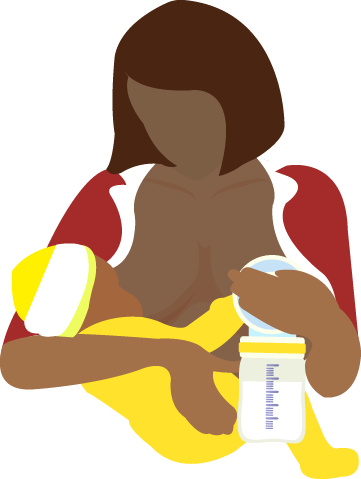How often should I pump and for how long?
If you’re trying to build up your milk supply, pump in between nursing sessions when you’re with your baby. If you’re pumping at work to replace feedings you’re missing, try to pump on the same schedule as your baby’s feedings back at home so you keep your milk supply going strong and aligned with baby’s demand, usually every three to four hours.
Aim to spend 15 to 20 minutes hooked up to the pump to net a good amount of breast milk (some women will need 30 minutes or more with the pump, especially in the early days). Pump until the milk starts slowing down and your breasts feel well-drained. Be sure to clean the breast flanges after every use.
What’s the best pumping and breastfeeding schedule?
The best time to pump depends entirely on what works for you, and you’ll soon figure out a pumping schedule that works. But it’s best to choose a time of day when your breasts are ordinarily full. If you’re pumping because you’re away from your baby and missing feedings, try to pump at the same times you would normally feed, about once every 3 hours.
If you’re pumping at home to stockpile milk or to increase your supply, try pumping an hour or so after your baby’s morning nursing session. Your breasts are naturally fuller earlier in the day, so the morning is a good time to net more milk.
On days when you’re with your baby, squeeze in a pumping session around an hour after you nurse and at least an hour before the next time you breastfeed — more demand means more supply. But don’t overtax yourself in the name of building a breast milk stash: Pumping between each breastfeeding session or between nighttime feedings will just exhaust you…which in turn can diminish your milk supply.
Some moms are able to pump from one breast while baby is nursing on the other. As long as baby is getting her fill on one breast, it’s a time-efficient way to build a stockpile of milk while also ensuring both breasts are emptied during a feeding. But it’s probably best to wait until you’re experienced at both breastfeeding and pumping, otherwise this could be tricky and frustrating.
You can also pump at the end of feedings to make sure every last drop of breast milk is captured (many moms find it easier to do a post-feeding pump with a manual pump instead of an electric pump).
If your baby has started to spread her feeds out to once every four hours, you can also try pumping every two hours between feedings. Doing this will increase your milk supply and give you plenty of breast milk to store away.
It’s best to avoid late afternoon or early evening if you can, as your milk supply is likely to be at its lowest due to end of day exhaustion and stress.
Source: What to Expect




